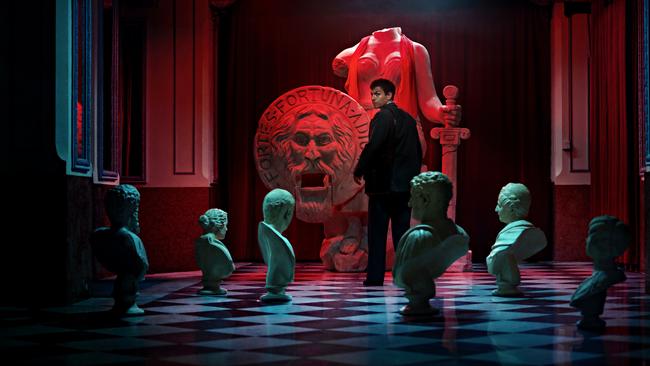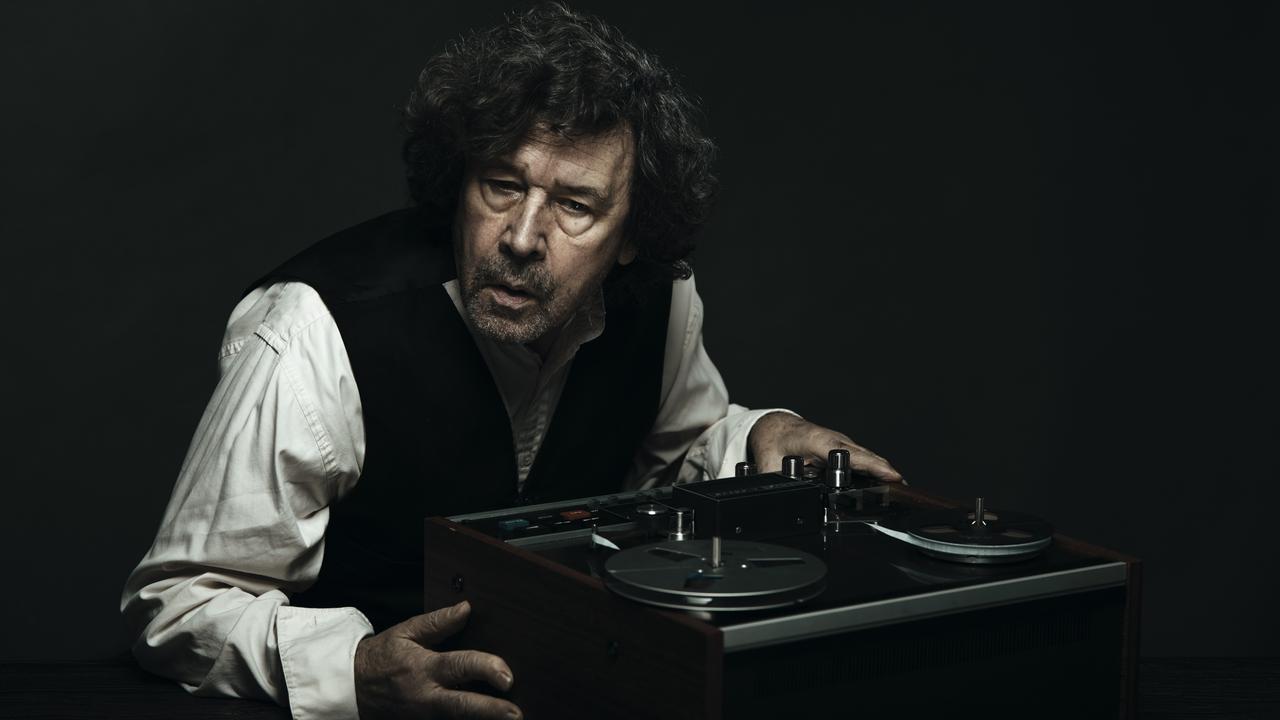
Fellini Forward (CTC)
Amazon Prime
★★★½
Can AI be as good as FF? That is the intriguing question posed in the documentary Fellini Forward, in which filmmakers and artificial intelligence collaborate to make a short movie as it would have been made by the Italian cinematic maestro Federico Fellini (1920-1993).
The project was backed by Fellini’s niece Francesca Fellini and funded by the Italian drinks manufacturer Campari, which has a strong association with the arts and for which the director made a sumptuous commercial in 1984.
German filmmaker Max Nieman, asked to make a film that has the same creative DNA of 8½, La Dolce Vita, La Strada and so on, takes a good humoured approach. He laughs a lot and admits the very idea of replicating Fellini’s genius is “crazy”.
This 45-minute documentary is in two parts: the process of making the film and then the film itself, which runs for a bit over 10 minutes.
The first part also includes file interviews with Fellini and living directors who revere him, such as Martin Scorsese, and clips from Fellini’s films.
Nieman and his crew take advice from Francesca Fellini, filmmakers who worked with her uncle, such as cinematographer Blasco Giurato, AI experts and, of course, the AI itself.
The making of the film is fascinating and thought-provoking. Algorithms spending time in the director’s chair. Is that good or bad or somewhere in between?
The scripts of all of Fellini’s films are fed into a computer which looks for patterns in his work.
Once the AI is across the oeuvre, the script is written like this: a human writes a line and asks, “How do we continue AI?”
AI responds with five options for the next line. The human creative team debates which one to go with.
Does this mean humans retain creative control? Not necessarily according to AI adviser Marcus du Sautoy, who is entertaining in his take on the “riffing” between the collaborators. He thinks the “code” is joint-creator, and uses DNA and Pablo Picasso to back up that argument.
And the script is just the start. AI also looks for visual patterns in Fellini’s films, from camera angles to the use of colour to the expression on actors’ faces.
When advisers such as Giurato see the rushes, they are impressed but also point out the errors of AI’s ways. “Fellini would never do a close-up like that!” So it’s back to the editing room.
And the short film itself, which centres on a handsome young man named Federico and a beautiful, mysterious young woman in a red dress? Is it Fellini-esque? Yes it is, particularly the dream-like merging of fantasy and reality and the introduction of odd characters such as an admiral and an elephant.
Does this mean it’s the beginning of the end for human filmmakers? Not yet. The “new” Fellini film is only 10 minutes after all. As for the man himself, his niece thinks he, an artist full of curiosity, would be interested in the project.
Everyone involved speaks openly about the positive and negative implications of computers making films. They all acknowledge – even du Sautoy – that a full-length Fellini is out of AI’s reach, for now. In that context it’s perhaps worth remembering that world chess champion Garry Kasparov beat IBM’s Deep Blue in their first tournament but, after the computer was upgraded, lost their rematch.
-
The Manor (MA15+)
Amazon Prime
★★★½
The American actor Bruce Davison received an Oscar nomination three decades ago for Norman Rene’s pioneering AIDS film Longtime Companion.
Viewers of The Manor, however, might think of an earlier film, the 1971 cult classic Willard, in which he is the titular rat-loving oddball.
Davison is Roland, a rusted-on resident of Golden Sun Manor, a gothic (but with nice interiors) nursing home somewhere in America. He still has a spring in his step and a glint in his eye. When former ballerina Judith (Barbara Hershey) moves in, he soon suggests a pas de deux.
She is flattered but knocks him back. However, she decides to remain friends with him and his two pals, Trish (Jill Larson) and Ruth (Fran Bennett), also long-time residents.
This quartet is the centre of this 80-minute movie and all of the performances are strong, especially from Hershey, who received her own Oscar nomination for Portrait of a Lady, Jane Campion’s 1986 adaptation of Henry James’s 1881 novel.
As 70-year-old Judith comes to terms with her new, locked-in existence, the lifers promise they are there to help her. She laughs at their jokes about old age and the fountain of youth.
They warn her not to be like her roommate Annette (Nancy Linehan Charles), who says someone or something evil is watching them. That sort of behaviour leads to “diagnose and medicate”.
Yet there is something about Roland, Trish and Ruth that seems off-kilter. When Roland says, “We’re all on death row”, Judith laughs, though perhaps wonders why.
Her connection to the now outside world is her devoted teenage grandson Josh (Nicholas Alexander). There’s a lovely scene where he starts to doubt her and she recalls how she stood by him as a child when he was scared of the bogey man. “I had faith in you. Can’t you have faith in me?”
This goes to the core of what this movie is about. The scariest bit is something that happens to most of us in the end: being thought of as an “old person” and treated like a child rather than a thinking adult human being. The show that comes to mind is the brilliant, melancholic British TV comedy One Foot in the Grave, starring Richard Wilson, particularly series four, episode three, Hearts of Darkness.
This film is the eighth and final instalment in Welcome to the Blumhouse, a series produced by the American horror maestro Jason Blum, who has worked with the antipodean jump scare duo James Wan and Leigh Whannell (Insidious, The Invisible Man).
It is written and directed by Axelle Carolyn, who has her share of fright scenes, as an actor and director. The focus of the final four films is “institutional horrors and personal phobias”.
This movie fits that billing. Judith does have “senior moments”, including memory loss and hallucinations. Is she suffering from dementia or is Annette’s evil entity messing with her? Are Roland, Trish and Ruth being kind or do they have less generous motivations?
These questions are answered by the end, but with a surprising twist that makes all of the characters, including Judith, much more than they seem to be.
-
There’s Someone Inside Your House (MA15+)
Netflix
★★★
There’s Someone Inside Your House is, like The Manor, a psychological thriller. However, with Australia’s James Wan as a lead producer there’s a fair bet a carving knife will be added to the mind games.
This movie is set in a corn town in Nebraska and that bet is paid out in the opening scene. A high school football star is home alone, sleeping before an evening match. He wakes, hears someone, arms himself with a golf club and yells, “You’re in my house so I can legally kill you, you f..k.”
The visitor appears, wearing a mask and wielding a knife. The football star tries but fails to exercise his legal prerogative.
The senior students at the school then receive a video message that shows the football star hazing a teammate, Caleb (Burkely Duffield), who is gay. This points the finger of suspicion at Caleb. Then there is another killing. This scene, which culminates inside a church confessional, is well done, and might reveal something about the killer’s mind.
Another video appears on everyone’s phones. The female victim, the school captain, was a white supremacist, though not publicly.
Two deaths in, we have a pattern: students are being killed because of their secret selves: a homophobe, a racist, and there is more to come.
Caleb remains a suspect but others join the list. There’s the friendless Ollie (Theodore Pellerin), an “all-in-black school shooter style icon”; the recent arrival from Hawaii, Makani (Sydney Park), who writes poetry; the privileged Zach (Dale Whibley), whose father collects Nazi memorabilia, the town’s only Uber driver, and others.
This 95-minute movie, directed by Patrick Brice, written by Henry Gayden and based on the 2017 novel by Stephanie Perkins, is a mix of Halloween and a John Hughes coming-of-ager like The Breakfast Club. As with the director’s previous movie, Corporate Animals, there is quite a bit of humour. The title made me think of one of the scariest movies I saw as a teen, Fred Walton’s When a Stranger Calls (1979). This one is nowhere near as scary but it’s well-made, well-acted and should keep couch-bound sleuths guessing until the end.



